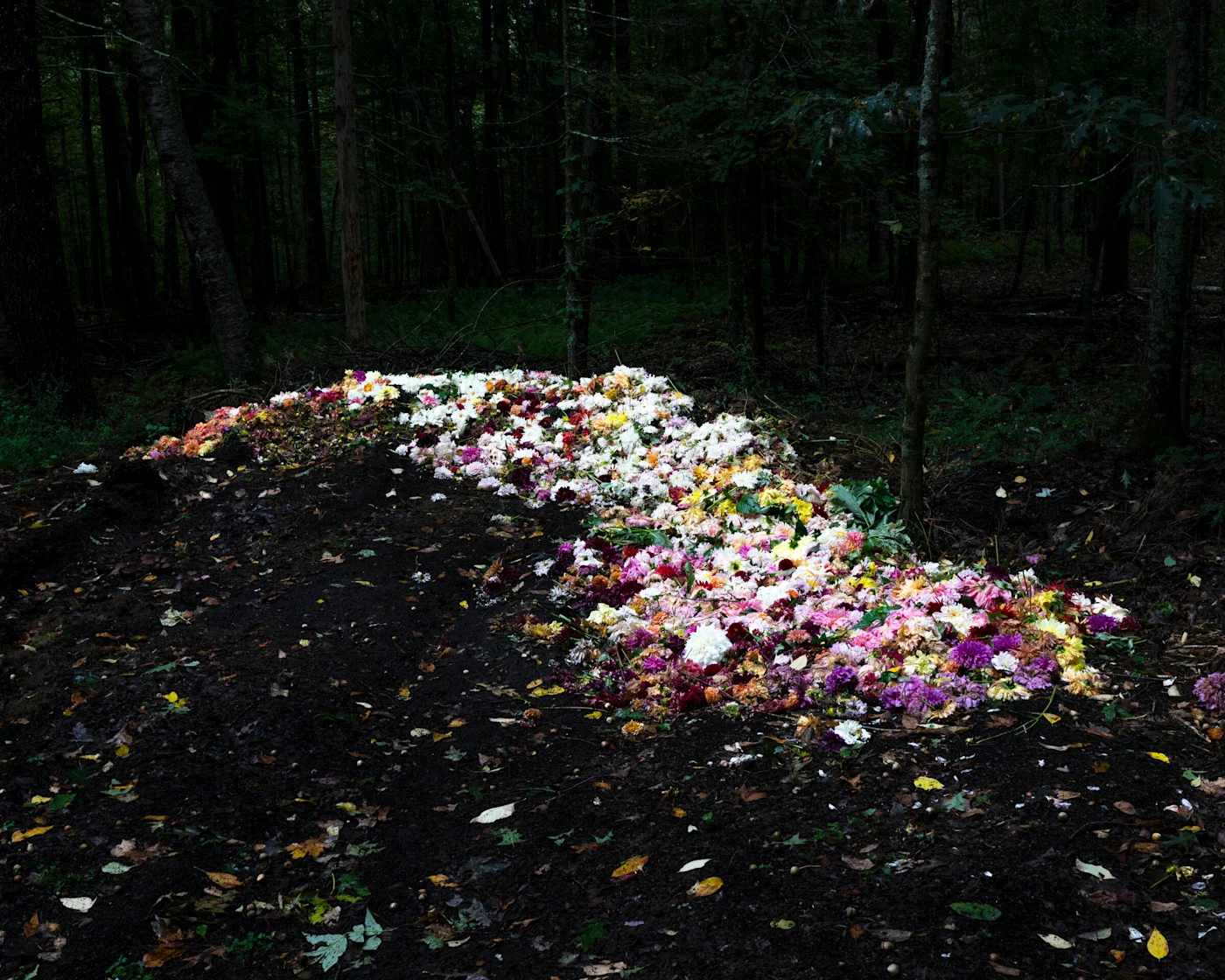The Ecological Crisis and the Rise of Post-Fascism
Antithesi
Other languages: Türkçe, Español, Deutsch
The ecological crisis profoundly impacts the material conditions of social reproduction, extending beyond "natural disasters" to encompass a deepening of the contradictions inherent in capitalism. This crisis does not only manifest itself in events like floods, droughts, and pandemics, it also plays a direct role in fueling conflicts, social unrest, and mass displacement. In what follows, we attempt to lay out a comprehensive argument for the connection between the ecological crisis and the rise of what we call the post-fascist current, a political and ideological tendency that is rising all over the world. Post-fascism is the political form of the conversion of widespread mass indignation at the conditions of social existence into nationalism, racism, and ethno-cultural conflict without in the least challenging the mainstream forms of authoritarian liberalism. Instead, it serves as a complement to these forms, acting as a lever to normalize policies once considered extreme and unacceptable, while at the same time creating a false adversary that legitimizes them.
The capitalist form of the metabolism between society and nature
The capitalist form of the metabolism between society and nature is defined by the tendency of capital towards its own uninterrupted and unlimited expansion as self-valorizing value. This tendency necessarily comes into conflict with the naturally determined material and temporal conditions of production, such as the biological reproduction cycles of animals and plants. The homogeneous, divisible, mobile, and quantitatively unlimited character of the value form is in direct opposition to the unity and indivisibility of the products of nature, with their qualitative diversity, local specificity, and quantitative limits.
The fact that capital regards every socially conditioned natural limit as a barrier to be overcome does not mean that such an overcoming is actually possible without upsetting local or even planetary ecological balances. On the contrary, it is precisely here that the potential for both catastrophic changes in local and peripheral ecosystems and a more comprehensive disturbance of the planetary ecological balance originates. The disruption of the current planetary ecological equilibrium (with the emergence of the Anthropocene), the accumulation of greenhouse gasses, pollutants, and toxic substances, and the potentially irreversible catastrophic alteration of the climate — leading to the destruction of the natural prerequisites for the satisfaction of human social needs — are not inevitable outcomes of the conflict between society and nature. Instead, they are specific historical phenomena tied to the prevalence of the capitalist mode of production.
Capitalist managers and experts begin to discuss the “rational management of natural resources” when the productivity of capital is compromised by the wasteful and destructive practices inherent in the production processes of the companies and states they govern. This includes the depletion of cultivated land, deforestation, water pollution, the exhaustion of easily extracted fossil fuels and rare elements, etc. When environmental degradation hinders the expanded reproduction of capital, such as through a slowdown in agricultural productivity or increased spending on combating pollution-related diseases, thereby increasing the value of labor power, these instances of environmental degradation are labeled by mainstream economics as “environmental externalities” or “market failures due to the lack of property rights,” among other terms. These categories represent, in a mystified form, the necessity to shift the increased cost of capital onto the global proletariat through the imposition of consumption taxes and the provision of subsidies to capitalist enterprises for the adoption of “eco-friendly technologies” (“Green Deal,” “renewable energy,” “circular economy” and the like), in order to “internalize external environmental economies,” according to the economics mumbo jumbo.
Nature as a social category
Nature is not immediately given: there can be no unmediated knowledge of nature. Its knowledge and its concept are socially mediated: the perception of what is natural at any given stage of social development, and the way in which it relates to humanity, as well as the form, content, scope, and objectivity of this concept, are all influenced by social conditions. Therefore, the proposition that nature is a “social category” implies, above all, that all natural objects are socially mediated by the fundamental form of objectivity that prevails in a particular society — which is to say, in capitalism, by the value form.1


As we have already argued, the tendency of self-valorizing value toward unlimited expansion turns nature into a mere object for humanity, a mere matter of utility, an object to be freely appropriated without any concern for the squandering of its wealth and powers — let alone for its “bequeathment in an improved state to succeeding generations.”2 There is no rational regulation of the metabolism between society and nature that could ensure the satisfaction of rich and diverse human needs without the depletion of natural resources. This is the basis of the ecological crisis we are facing today, the main expression of which is catastrophic climate change.
But apart from this abstract, calculable, and formally/instrumentally rational conception of nature that follows from the economic structure of capitalism, another conception of nature arose as a reaction against capital reification and its tendency to “strip humans of their human essence”: a romantic-irrationalist conception that ascribes to nature the meaning of an organic growth, in contrast to the artificial structures of human civilization. As Georg Lukács astutely notes: “the concept of ‘organic growth’ as a militant slogan against reification acquired, through German romanticism, the historical school of law, Carlyle, Ruskin, etc., an increasingly clear reactionary connotation.”3 Despite its pretensions, the romantic / organicist conception of nature serves as a justification of the prevalent order of things. Its rejection of capitalist reification assumes the character of an opposition solely to the egalitarian, anti-hierarchical, anti-authoritarian elements of modernity which, moreover, are being branded as decadent, degenerate, “humanist” or “judeo-communist” by the fascist outgrowth of this current.
The invocation of “blood and soil,” the idea of a mystical connection between a particular ethnic group and a particular geographical landscape, the differentiation between the “automatons” and the “ensouled,” the idea of nature as a blueprint for ideal social relations based on scarcity, racial “hierarchy,” competition and “selection” are all attributes of the developed nationalist form of the romantic-irrationalist conception of nature. This conception is an integral part of an ideological programme for the containment and diversion of class and social struggles into intra-proletarian conflict along national and racial lines. It seeks to endorse and solidify inequality and hierarchy as the natural state of affairs.
It is important to note that the conception of nature promoted by historical fascism and Nazism was an attempt to reconcile these two poles. Positivist knowledge and technological know-how were combined with a powerful sense of identity of the immortal “Volk” and the “spiritual.” The palingenesis of the nation within a new world order linked the notion of the mythic clash of Aryan and non-Aryan cultures — a struggle to the death for existence — with pseudo-scientific elements of racial anthropology, Social Darwinism, and eugenics. Land reclamation in the East was at the same time a racial project of going “back to the land” and the realization of a technocratic “utopia” (i.e., dystopia) that was intended to be created “through a process of purging destruction, the ruthless subjugation and ‘resettlement’ of indigenous Slav races, the eradication of their culture, the annihilation of Jews, communists, prisoners of war, and everything that smacked of the subversive or dysgenic.”4
The ecological crisis and the rise of reactionary ideologies
The ecological crisis described in the first section of this essay is a key aspect of that protracted crisis of reproduction of capital that forms the substratum of the whole historical period since the “Great Recession” of 2008. The outbreak of the SARS-CoV-2 pandemic, a global health crisis that is another form of the unitary capital “polycrisis,”5 was itself a product of the way in which capitalist production relates to the non-human world, and occurred at a time when even the strongest economies were struggling to escape from prolonged economic stagnation and excessively low growth rates. The existing and anticipated disruptions caused by climate change intersect with ongoing catastrophes of poverty and violence. These problems mutually exacerbate and amplify each other, with one manifesting through the other.
Measures taken to bolster capitalist social reproduction and accumulation during the pandemic and after the outbreak of the “inflation crisis” could not reverse the deeper problems of profitability and of the expanded reproduction of capital at a global level. As a result, despite all the chatter about a “soft landing” of the economy, even mainstream economists continue to predict a prolonged period of secular stagnation (or even of “stagflation”) for the coming period. Due to the deprived or bleak living conditions in many parts of the world, once the COVID restriction measures were lifted a significant rebound of migration flows occurred. From Ukraine and Nagorno Karabakh to Palestine, Eritrea, and Western Sahel, as well as Haiti, Cuba and Venezuela, human displacement has taken on immense proportions of late. Almost everywhere, this has been due to factors such as adverse effects of climate change (droughts, floods and wildfires), the outbreak of military conflicts, and the growing impoverishment brought on by the pandemic, rising food prices, and the effects of interest rate hikes by central banks in the global North on the world’s poorest countries.
It is obvious that the ecological dimension of the capitalist crisis exacerbates existing contradictions, since it is directly and indirectly connected to the displacement of huge numbers of people, leading to a substantial increase in migration flows. This is why, in addition to the classic reactionary Social Darwinist delusions presenting inequality and the “survival of the fittest” as unavoidable and irrevocable “facts of nature” (e.g., delusions permeating COVID denialism and anti-vaccination discourse regarding the alleged superiority of “natural immunity”), various regurgitated versions of neo-Malthusianism have also reemerged.


A supposedly more “sober” version of this ideology reproduces the main points made by Garrett Hardin in his 1974 article “Lifeboat Εthics,” namely, that the earth is like an ocean on which the inhabitants of rich countries float in lifeboats while disadvantaged people from poorer regions are left adrift. According to Hardin, the capacity of the lifeboats is finite and if the rich nations allow the poor into the lifeboat, everyone is doomed: “Complete justice, complete catastrophe.” Post-left reactionaries such as Sahra Wagenknecht, for example, claim that the limited resources of the “welfare state” should be allocated to the citizens of the nation, subscribing to the discourse of neoliberal austerity regimes that promote the social imposition of scarcity through austerity measures. Current scarcity, however, is not “natural” but socially and politically conditioned by the internal dynamics of capitalist accumulation.
A more brazen reactionary populationist ideology is the so-called theory of the “Great Replacement,” highly popular among the far right, the “alt-right,” and outright Nazis. According to this conspiracy theory, the “globalist elites” are demographically and culturally replacing white populations with non-white and especially Muslim people through mass migration, differential demographic growth, and a drop in the birth rate of white Europeans and Americans. This drop in the birth rate is attributed to “gender ideology,” mass vaccinations, “manufactured diseases” (COVID has been portrayed as such), chemtrails, the legalization of abortion, mind control and media manipulation, “xenoestrogens” contained in genetically modified soybeans and other GMOs, ...and the whole nonsense continues unabated. The “Great Replacement” conspiracy theory shares with the more “respectable” neo-Malthusianist discourses a disdain for the excessive reproduction of the poor which are portrayed as threatening the “more industrious and more worthy members” of society.6
The manifesto entitled “The Great Replacement,” posted online by the self-described “Ethno-nationalist Ecofascist” who murdered 51 Muslim worshippers in New Zealand on March 15th 2019, laments the dwindling fertility rate of “white nations” in comparison to non-white “races.” As the murderer wrote in his noxious rant: “the environment is being destroyed by over population [sic], we Europeans are one of the groups that are not over populating the world. The invaders are the ones over populating the world. Kill the invaders, kill the overpopulation and by doing so save the environment.” It is remarkable that climate change is directly connected with immigration and birth rates. In response to the question “Why focus on immigration and birth rates when climate change is such a huge issue” he writes “Because they are the same issues.”
Climate change denialism
The perverse connection between climate change and “great replacement” can be attributed to a shared sense of catastrophic non-localizable crisis. However, the standard approach of the emergent far-right current — whose composition is drawn from both the right and the left — is climate change denialism. There are several forms of denialism: trend denialism (“there is no increase of temperature”), attribution denialism (“it is caused by the cycles of the sun and not by humans”), impact denialism (“it won’t do any harm, on the contrary it will help the growth of forests”), action denialism (“we cannot / do not need to do anything”) and urgency denialism (“we still have a lot of time to respond”). The reason why climate change denialism prevails within this current is the fact that it is difficult to shift the blame to immigrants and discover nationalist local causes for a global phenomenon that is an expression of the transnational structure and logic of capitalist production, which is inextricably linked to fossil fuels as its most important energy source.
Climate change denial ensures that capitalism as a mode of production remains immune from criticism, thereby suppressing the need for transformation of its relations of production. Instead, its cataclysmic social results and suffering — experienced mainly by the poorest populations (famines, diseases, civil strife, etc.) — are attributed to their own ineptitude. On top of that, instead of addressing its causes, murderous security measures are taken in the context of the militarized management of the consequences of the climate crisis. As Sam Moore and Alex Roberts observe in The Rise of Ecofascism, “Denialism attempts to push through environmental limits, externalizing the risks onto others. Securitization turns this risk into profitable control. Rather than two separate tendencies, they are increasingly aligned as two facets of the governance of nature and society: one produces and displaces risk, the other capitalizes it.”7 A prime example is the policy of the Trump administration, which on the one hand denied the existence of climate change and on the other promoted the extension of the wall on the US border with Mexico, which serves to prevent the influx of migrants created by the climate crisis.
Reactionary ecology and conspiracy theories
Ιt is not surprising that far right forces in the vanguard of climate change denial are simultaneously expressing a localist and nationalist discourse in favor of environmental protection, and have even tried to get involved in protests against the installation of wind turbines and other local environmental struggles. This type of environmentalism does not attack the capitalist exploitation of nature but displaces the issue into the defense of the “native soil” and landscape, and the “traditional” national culture and way of life. CasaPound in Italy, the Patriotic Alternative in Britain and Golden Dawn (GD) in Greece treated the destruction of local environments (e.g. the mountains of Mani, in the case of local cadres of GD, a southern part of Peloponnese) as an outrageous violation of natural limits, while defending the structural condition of carbon emissions (e.g. mining and burning lignite for electricity generation in Northern Greece).
Addressing the overarching climate crisis would require a radical transformation of production in general and energy production in particular. By contrast, “green capitalism” and the development of “renewable energy production” fail to constitute a solution to the problem of environmental disaster, and create even more damage in other ways. According to the World Bank, the increase in material extraction that would be required to build enough solar and wind utilities to produce an annual output of about 7 terawatts of electricity by 2050, in order to power roughly half of the global economy, is tremendous: 17 million tons of copper, 20 million tons of lead, 25 million tons of zinc, 81 million tons of aluminum and no less than 2.4 billion tons of iron.8 The transition to renewables will require a massive increase over existing levels of extraction. The demand for neodymium — an essential element in wind turbines — will have to increase by 35 percent in order to reach the target of zero emissions, whereas demand for indium, essential to solar technology, will triple, while the demand for lithium, necessary for power storage, is predicted to rise 27 times. If we examine only lithium, chemical leaks from lithium mines have poisoned rivers from Chile to Argentina, Nevada to Tibet, killing off whole freshwater ecosystems.9 And these figures would only cover the power needed for the existing capitalist production. In other words, unless there is a radical transformation of social reproduction, so-called “clean energy” may become as destructive as fossil fuels.10


However, the criticism originating from reactionary forces does not focus on the capitalist mode of production and the dynamic of capitalist accumulation, but promotes a nationalist-populist narrative according to which “the common people” are threatened by the cosmopolitan, liberal “elites” — the so-called “globalists” — who exploit the “lie of climate change” to promote their interests at their own expense, by destroying the local environment, way of life and economy in order to achieve global governance (the “New World Order”)11 and/or promote “a multibillion-dollar worldwide industry.”12 Of course, climate change is being exploited by capitalist corporations all around the world to make profits. However, the fact that sections of capital can make a profit out of this exploitation does not, of course, mean that “climate is a hoax, any more than the fact of Pfizer reporting tremendous profits rendered COVID a hoax. One would have to have surrendered all critical thinking capacities to arrive at such conclusions as they betray a serious lack of understanding about how capitalist commodification and profitability function.13
Conspiracy thinking does not merely deflect discontent away from capitalist social relations. It is also instrumentalized by governments in order to shift the blame for their failures to the most convenient scapegoats, directing anger against the weakest and most marginalized sections of the population. In the case of Greece, widespread conspiracy theories that forest fires are caused by arsonists as part of a master plan to depopulate whole areas, change land use, install wind turbines, or, in another version, by secret agents from Turkey or suspicious elements plotting against the country, have become part of the official discourse of the Greek state. Mitsotakis, the current prime minister of Greece, did not hesitate to repeat and promote the conspiratorial racist narrative that migrants/refugees were responsible for the unprecedented disaster of the August 2023 Evros fires, even though the official fire service statements attributed the fire to lightning in the context of a dry storm phenomenon. At the same time, he gave political cover to the fascist militias operating on the border illegally detaining, torturing and robbing immigrants and refugees, presenting the racist pogroms as acts of “vigilante justice” against the (non-existent) arsonists, while completely glossing over the fact that these militias were formed in full cooperation with the local authorities, border guards, and police.
Another denialist practice appropriated and instrumentalized by the Greek government consisted in the accusation that scientists and institutions are serving the political agenda of a nefarious enemy of the nation (in some cases this enemy is identified with the globalist elites, in other cases it is identified with the traitorous leftists who serve the interests of enemy countries). First, the Ministry of Environment attacked the European earth observation program Copernicus (the Earth observation component of the European Union’s Space programme which was later officially called upon to help with the floods), claiming that its assessment of the vast area destroyed by the fires was inaccurate because the satellite images have “low resolution.” New Democracy MPs then attacked the National Observatory of Athens, claiming that it was conducting propaganda and political games because of the data it published on the mega-fires and the huge increase in the area burnt. It is evident that in order to cover up the total inadequacy and incompetence of state infrastructure and services in dealing with the disasters caused by the unprecedented heat and drought and the extreme floods that are returning with unprecedented frequency due to climate change, state authorities will not hesitate to use any means, including the methods and language of the fascist far right.14
Post-fascism
Such an authoritarian approach may allow the plundering of nature to continue unimpeded, by passing on the costs and risks of the climate crisis to the weakest sections of the global proletariat. In the face of growing antagonism and the hardening of state authoritarianism against any demand, a significant part of the “domestic” proletarian population is likely to align itself with the ruling authoritarianism and accept as a survival strategy an authoritarian “solution” to every social question, including the question of climate change, through a deepening of the divisions within the proletariat.
The political expression of this trend can be seen in the emergence, all around the world, of a new far-right current that has either seized power (Argentina, Hungary, Italy) or alternates with authoritarian neoliberal forces (which include the so-called left and social democratic parties which have been transformed into neoliberal ones over the last 35 years). In both cases, the dehumanization of undocumented migrants and of outcast citizens (Roma, drug addicts, and homeless) has been normalized. The mask of a supposed “anti-systemic” character enables the new far-right current to mobilize en masse the most reactionary and disaffected sections of the working class and the petty bourgeoisie in favor of the restoration of national homogeneity and social stability, i.e., the violent restoration of the unity of the circuit of reproduction of national social capital.15 Following the Hungarian Marxist Gaspar Miklos Tamás, we call this current post-fascist,16 which refers to a form of politics that combines elements of neoliberalism, nationalism, libertarian individualism and modern democracy, while at the same time formally or informally excluding from citizenship the consolidated surplus population, i.e., the population that cannot even sell its labor power for exploitation, which constitutes the majority of people in the poorest countries and a significant part of the population in the developed countries, who survive through “humanitarian” aid and the “informal” economy.
So far, we have sketched a rough picture of the grim situation we face. Our critique of the post-fascist current and regime that has emerged and consolidated over the last 15 years, in a period of protracted capitalist “polycrisis,” of which the climate crisis is one of the most fundamental forms, is a necessary complement to the critique of the “normal” management of the ecological crisis within the current conjuncture, through the strategy of the so-called “sustainable development,” “circular economy,” “Green Deal,” and the like. The two poles of the “normative” (“democratic arc”) and the “prerogative” state (post-fascists of every color) are not mutually exclusive but reciprocally reinforcing. Any attempt to sustain a social critique must simultaneously turn against both poles. The “state of necessity” that is established by the capitalist crisis and above all by its ecological form is an accumulation of disasters and ruins. However, the destruction of the planetary ecological balance still remains today “a concrete aspect of the critique of political economy.”17 “One can predict entropy, but not the rise of something new. The role of the theoretical imagination is still that of discerning, in a present crushed by the probability of the worst-case scenario, the diverse possibilities that nonetheless remain open.”18 As far as we are concerned, we continue to see the possibilities that can be opened up by class and social struggles against the world of capital that necessarily reject anything related to the state and nationalism.
January 28, 2024
Notes
1. Certainly, neither the content of our knowledge of nature nor its material existence are exhausted by the social form of its mediation, as the material of the concept retains a remainder that resists complete assimilation into the concept. “Nature is a social category. That is to say, what passes for nature at a determinate stage in social evolution, the constitution of the relation between this nature and man and the form in which the confrontation of man and nature takes place, in short, what nature signifies in its form and its content, its range and its objectivity, are all socially conditioned.” G. Lukács, History and Class Consciousness, Studies in Marxist Dialectics, MIT Press, 1971, 234.↰
2. K. Marx, Capital Vol. III, Penguin, 1981, 911.↰
3. G. Lukács, History and Class Consciousness, 136, 214.↰
4. Roger Griffin, Modernism and Fascism, Palgrave, 2007, 324-326.↰
5. According to Adam Tooze who popularized the term, “polycrisis” is a historical predicament of multiple crises, whose causes and processes are inextricably bound together to create compounded effects. As we see it, “polycrisis” is the multivalent appearance of the crisis of reproduction of capital.↰
6. R. Malthus, An Essay on the Principle of Population, ESP, 1998 [1798], 27.↰
7. Sam Moore & Alex Roberts, The Rise of Ecofascism. Climate Change and the Far Right, Polity, 2022, 44.↰
8. “The Growing Role of Minerals and Metals for a Low Carbon Future,” World Bank, 2017. Online here.↰
9. Amit Katwala, “The Spiraling Environmental Cost of our Lithium Battery Addiction,” Wired, May 8 2018. Online here. ↰
10. Jason Hickel, “The Limits of Clean Energy,” Foreign Policy, 6.0.2019. Online here.↰
11. Already in 2003, the Republican senator from Oklahoma James Inhofe claimed that supporters of the Kyoto Protocol for the reduction of greenhouse gas emissions aim at global governance. See here. ↰
12. Martin Durkin, The Great Global Warming Swindle documentary. Online here. ↰
13. The fact that a not-insignificant part of the left and of the anarchist milieus also subscribe to a shallow populist anti-capitalism/anti-imperialism, and/or a neo-romantic criticism of science and technology has led in some cases to the adoption of reactionary narratives very close to the ones followed by the far right. In this context, eco-fascist groups have even emerged out of the individualist anarchist milieu (ITS).↰
14. This inadequacy is due to the deliberate choice over many years to underfund essential public services such as forestry and flood protection.↰
15. It is important to note that this current as a social movement is projected as impartial, beyond the division between left and right. Of course, the issues it has raised so far are clearly part of pre-existing far-right and reactionary schemes, such as attacking the “woke-left” and “rightsists,” cultivating fear about an alleged “invasion” of migrants and an impending “climate lockdown,” creating moral panic against vaccines that will alter “our children's bodies and DNA,” etc. However, in the context of its supposed antisystemic character, it is important for this current to present itself as a rupture with mainstream politics and to claim that it constitutes something that transcends the traditional opposition between left and right. This is why the participation of some prominent self-identified “progressives,” leftists and anti-authoritarians is so crucial to its constitution.↰
16. G. M. Tamás, “On Post-Fascism,” Boston Review (online here). Apart from their important differences, the basic common element between fascism and post-fascism, which in the latter case justifies the second compound of the term, is the dual form of the state. On the one hand, there is the “normative state” (Normenstaat) where the rule of law is maintained for those who belong to the political community; on the other hand, there is the “prerogative state” (Maßnahmenstaat) where the treatment of those excluded from the political community becomes arbitrary and outside the law (On this point, see Ernst Fraenkel, The Dual State. A Contribution to the Theory of Dictatorship, Oxford University Press, 1941). In today's world, those excluded from the guarantees of the rule of law are mainly migrants and refugees who are surplus to capitalist production. However, the dividing line that determines which part of the population is under the jurisdiction of the “normative state” and which is under the jurisdiction of the “prerogative state” can always be moved to include parts of the local proletariat. Caution is needed here, as the far-right rhetoric of “techno-fascism,” “health apartheid,” “climate alarmism is fascism” etc. attempts inappropriate and invalid comparisons between real exclusions (refugees from Asia and Africa, Palestinians in Gaza or Jews in Nazi Europe) and non-existent ones (anti-vaxxers, “white Christians,” and so on). Apart from its propaganda value in attracting followers, this tactic serves a more fundamental goal of the post-fascists: to relativize and de-legitimize the very concepts of “apartheid,” “Holocaust,” “fascism” and so on.↰
17. Situationist International, The Real Split in the International, Pluto Press, 2003, 24.↰
18. Jaime Semprun and René Riesel, “Catastrophism, Disaster Management and Sustainable Submission,” 2008. Online here.↰